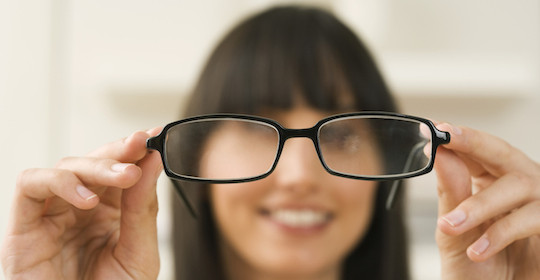Roughly half of the population has some kind of vision problem. There are several ways to solve vision issues. But not all of them are equally good. The most common way to correct a vision problem are eyeglasses. Individually customized glasses are now available for every vision need and every occasion. Eyeglasses also help protect your eyes against dirt, dust and insects. However, lenses with high diopter values can be very thick and heavy. They also fog up when exposed to drastic temperature changes. Another downside of eyeglasses is the distortion of the images. Exercising and professional sport activities are highly uncomfortable due to this distortion and need to be careful when wearing glasses.
The small plastic lenses are the first alternative to spectacles. Modern contact lenses allow for precise correction of almost all types of vision issues. Contact lenses result in only slight magnification or reduction of the image. Sideways vision is also sharp and is not interrupted by an edge or frame, as it happens with spectacles. On the other hand, certain manual skills are required to put in contact lenses. Wearing them too long can disrupt oxygen supply to the eye, which results in eye tiredness and dry eye syndrome. Contact lenses require more maintenance than spectacles, and incorrect maintenance can lead to infections. Contacts need to be changed every once in a while (frequency depends on the type) since they wear off. Glasses have a longer operational time unless your vision declines rapidly, but at the same time a pair of spectacles are more costly than several sets of contacts. Glasses and contact lenses help to correct some vision problems, but they are more like bandages and crutches, which is a temporary aid, which does not remove the cause of the problem.

Vision correction (or refractive surgery) is an alternative to both eyeglasses and contact lenses. By reshaping the cornea, refractive surgery changes the way that the eye focuses light. A laser cuts a thin flap of the cornea, then the laser ablates the necessary tissue to correct the specific type of vision impairment. Once the procedure is complete, the flap is folded back into place. The duaration of surgery is 15 min. Patients can enjoy sharp vision shortly after the procedure. No more heavy frame, distorted images, dry-eyes syndrome, additional costs, or danger of infection.
Having laser surgery to correct a vision impairment is the best choice for a number of professionals: sportsmen, dancers, performers, sailors, soldiers etc. And in comparison over long term laser surgery proves to be more economical than wearing eyeglasses or contact lenses. The most important requirement for an optimal procedure is that the physician must determine whether it is possible to perform laser surgery – not every patient qualifies for it. The physician decides what method is best for each patient.
